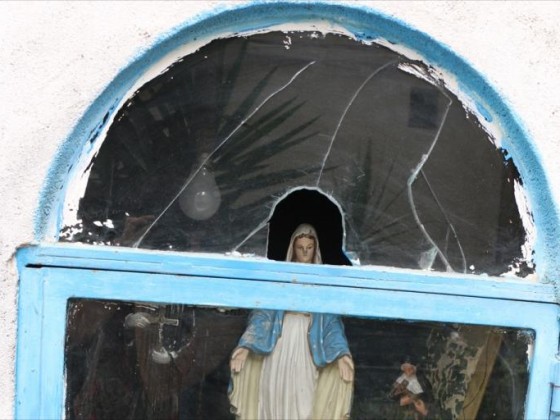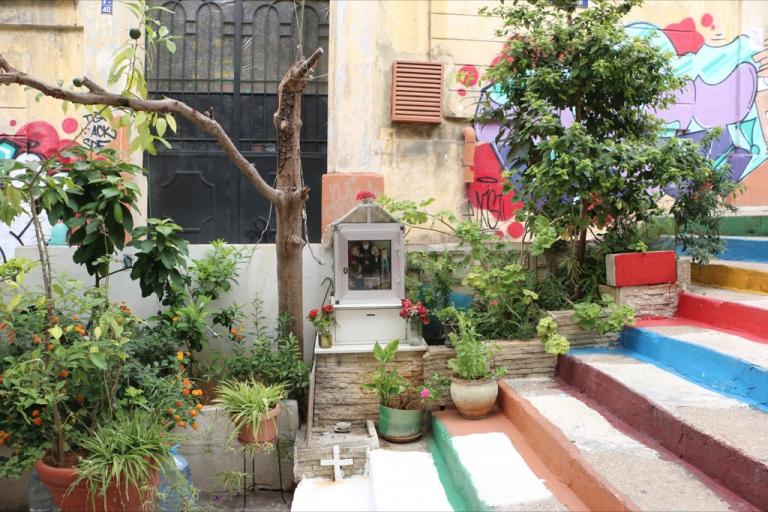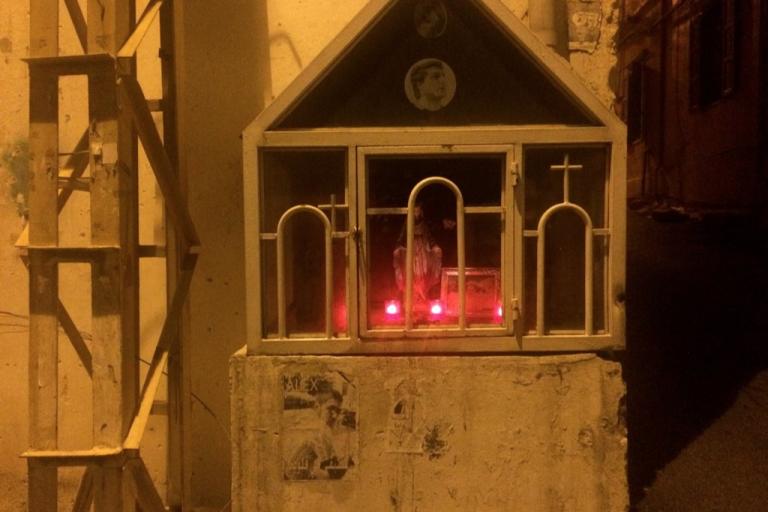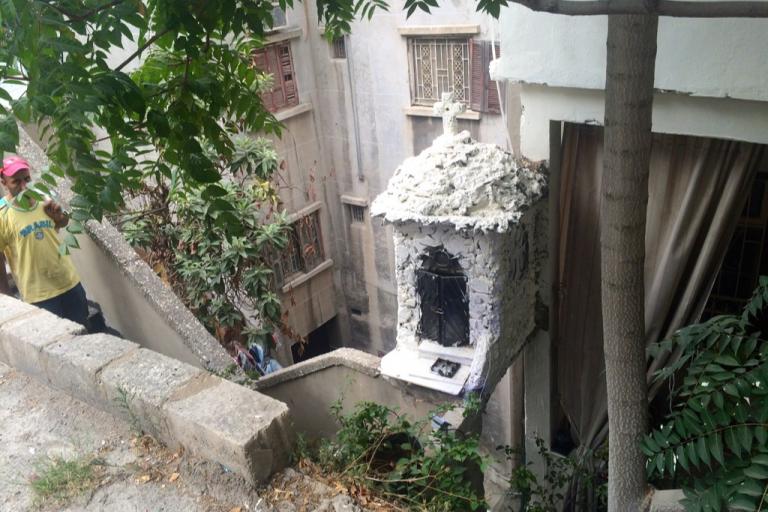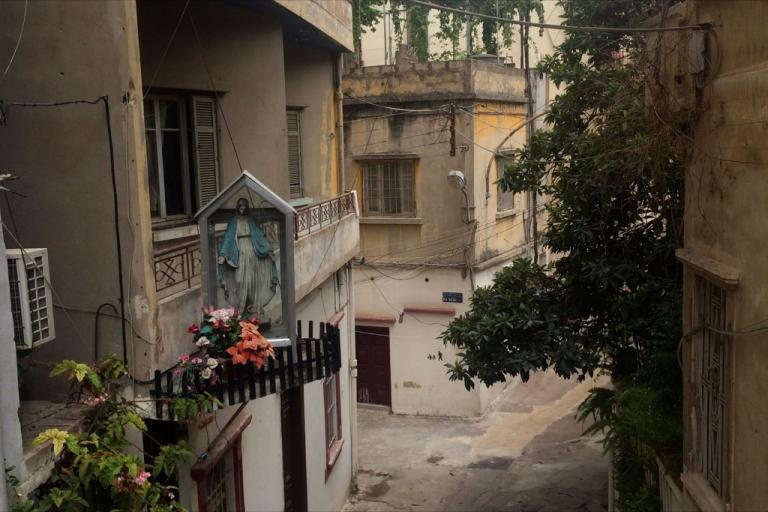BEIRUT, Lebanon — The Virgin Mary watches over the Geitaoui neighborhood of East Beirut. She watches from street corners and the foyers of apartment buildings, peers down from above doorways and up from windows below street level.
In this largely Christian part of the city, residents often set up small shrines to the Madonna and an assortment of saints — a common one is St. Marius, an early Roman martyr — who are seen to protect the neighborhood and those who live there.
